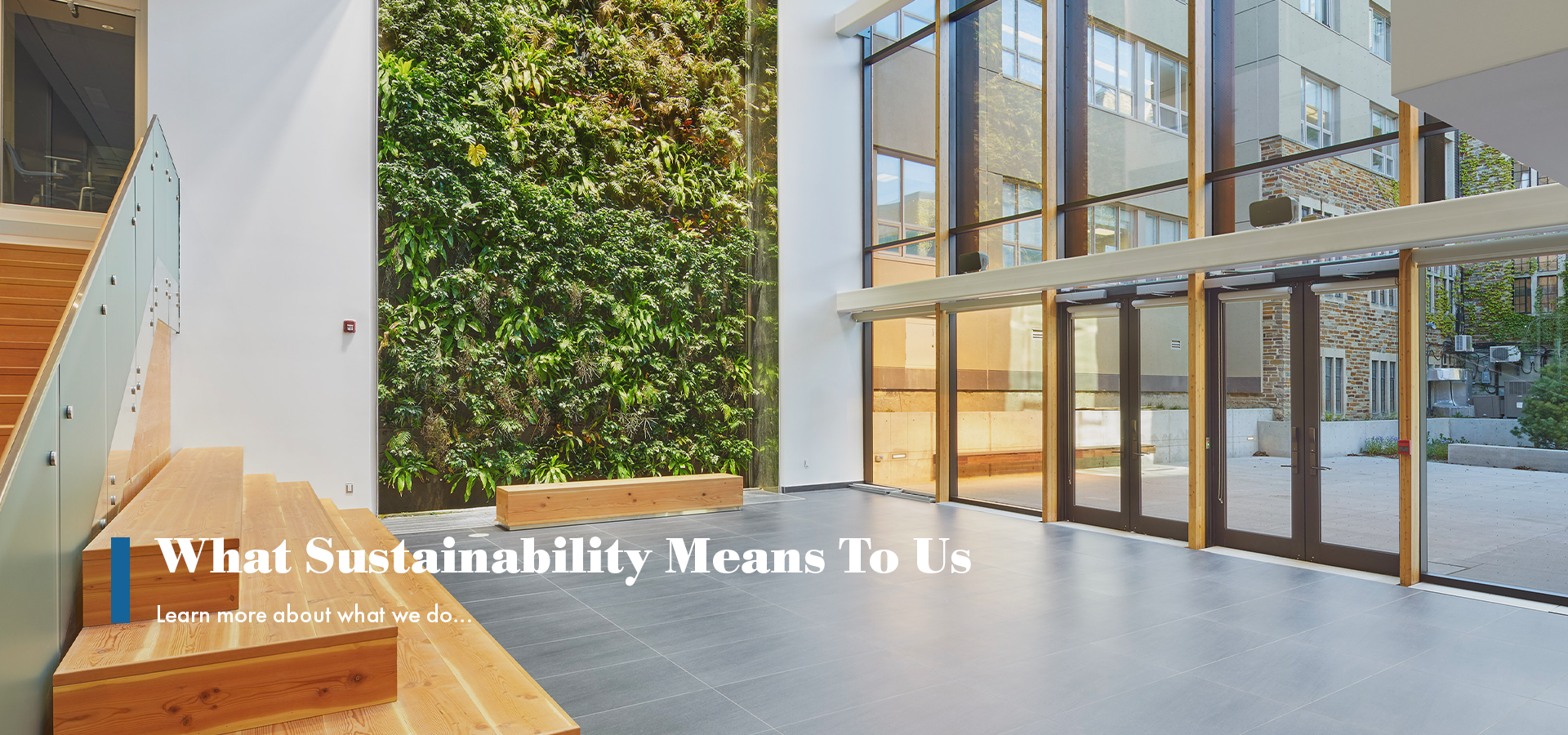Christine Chow, Eric Rubli, and Shaheen Asif highlight upcoming changes to sustainability regulations that may impact your projects.
The Government of Canada’s 2030 Emissions Reduction Plan provides a roadmap to how we can meet our enhanced Paris Agreement target to reduce emissions by 40-45% from 2005 levels by 2030. That is just under seven years away! So, it’s encouraging to see regulatory changes happening in jurisdictions all across Canada. Not only are we seeing many provinces setting their own Net Zero goals (for example, BC is aiming for all new developments to be Zero Energy Ready buildings by 2032), but also collectively, nationally, we are making big strides towards national climate change goals.
In this article, we’re summarizing a number of upcoming sustainability and energy changes that are likely to have the greatest impact for our clients. The bottom line is: change IS happening, and we’re here to help you plan and design for future regulations. We recommend you keep this post handy for a summary to these changes, as well as rollout dates to help you plan any upcoming project schedules.
Demanding Higher Performance from Our Buildings
Public Release of the LEED v5 Draft (National)
Effective date: Public comment expected to open sometime in 2023
What’s changing:
The next LEED rating system version (LEED v5) is expected to better address operational and embodied carbon, as well as adaptation and resiliency. The new version is also anticipated to consider the breadth and complexity of credit requirements, and trim and simplify in areas where they’ve received feedback that greater clarity is needed.
Currently in Canada, all new projects must be registered under LEED v4. While important updates to the LEED v4 energy requirements have been available for public comment since November 2022, and Footprint has been identifying any areas that will affect existing clients, LEED v5 is now the priority for the CAGBC. Our team will be keeping a close eye out for the draft to get further details.
New LEED Pricing Schedule (National)
Effective date: May 1, 2023
What’s changing:
On May 1, the pricing for LEED registration and certification for all LEED rating systems will increase. This is actually the first pricing increase for LEED since 2016, and the program (and green building design industry) has evolved significantly since then. This reflects the increasing levels of administration and updates needed to keep up with industry standards.
CLICK HERE to view the new pricing schedule on the CAGBC’s website.
Release of Version 3 (v3) of the Fitwel Standard (National)
Effective date: Expected sometime in 2023
What’s changing:
Fitwel V3 will reflect the most up-to-date research linking health and the built environment – a must for clients looking to plan ahead when it comes to optimizing building health and wellness.
Once launched, all new Fitwel projects will need to be registered and certified under V3. As Fitwel certification is valid for three years from the date of certification, projects that are registered on V2.1 will be grandfathered into the new standard, so we are working closely to outline options for affected clients.
Changes to the BC Building Code (BC)
Effective date: May 1, 2023
What’s changing:
A number of changes have been proposed for the BC Building Code (BCBC) in order to further British Columbia’s goal of all new developments becoming “Zero Energy Ready” by 2032.
- Updating referenced standards in the BCBC to more current versions. For example, AHSRAE 90.1 now refers to the 2019 version, while the NECB now refers to the 2020 version.
- Removing the lowest available Step in the BC Energy Step Code. This means the previous “Step 2” is now the minimum Step for projects demonstrating compliance under the Energy Step Code.
- Updating Step Code target values for certain occupancy types. For example, Offices and Personal/Retail Occupancies will have reduced Total Energy Use Intensity targets.
- The addition of an optional framework. This optional framework will directly target greenhouse gas emissions in new projects.
We’re advising clients in BC that large Commercial and Residential buildings (as defined by the BC Building Code as Part 3 projects) will need to investigate new and innovative strategies to conserve energy and reduce greenhouse gas emissions as the province and local jurisdictions work towards their energy reduction goals.
Toronto Green Standard (TGS) Development Charge Refund
Effective date: May 1, 2023
What’s changing:
The deadline to apply for a partial refund of development charges for TGS Version 3 (or later) was May 1st. Footprint has identified verified Tier 2, 3 or 4 sustainable and high-performance developments that may be eligible, and is working with impacted clients to plan any necessary submissions. After this date, the new Development Charge Rates will be in effect, which is something that all building owners should be aware of.
Ottawa High Performance Design Standard
Effective date: June 1, 2023
What’s changing:
Ottawa’s High Performance Development Standard is expected to come into effect for Site Plan Approvals beginning June 1st this year. The focus of this new Standard Ottawa High Performance Standard will be on energy saving measures related to the exterior of the building and early design decisions, and will add energy use, greenhouse gas emissions, and annual heating targets for a number of new building types – all of which will need to be determined by early stage energy modelling.
New buildings will need to be designed to meet or exceed one of the following:
- Total Energy Use Intensity (TEUI), Thermal Energy Demand Intensity (TEDI), and GHG Emission Intensity (GHGI) targets by building type per Table 1 below. (Multi Unit Residential Buildings are referred to as MURB in the table.)
- OR 25 per cent carbon emission reduction beyond the Ontario Building Code (OBC), SB-10, Division 3 (2017).
- OR Commitment to pursue a certification program such as Energy Star for MURBs; LEED, or BOMA Best with a minimum number of energy points, or equivalent.
We’re currently working with our Ottawa clients to prepare for this new standard.

It All Adds Up to Zero
The changes outlined above demand a higher level of planning and performance from new buildings. As the old proverb says: The best time to plant a tree was 20 years ago. The second-best time is today.
It’s never too early to plan for potential future energy efficiency and emission requirements, or the impact of surrounding environmental design aspects. We expect to see regulatory changes continue to accelerate as we move closer to our 2030 deadline, and as the need for energy-efficient and lower greenhouse gas-intensive solutions increases in demand.
Christine Chow leads Footprint’s Life-Cycle Assessment Services and is one of the leads of the Sustainability Consulting & Certification team. Christine is also a member of CAGBC’s Technical (Sites and Water) and Educational advisory groups.
Eric Rubli is a trusted sustainability expert and a Certified Passive House Designer. His diverse experience includes work in residential, education, and civic market sectors.
Shaheen Asif is a LEED Accredited professional, certified Passive House Designer, Approved Energy Consultant for BC Hydro New Construction and Green Globes, and is also featured on the CAGBC’s Experienced Modellers List. He is a passionate advocate for stringent building energy performance platforms and commitments.


